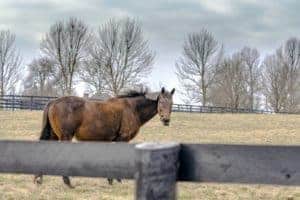
Understanding Equine Muscle Atrophy
Discover the causes, treatment, and prevention of this common muscular problem in horses.

Discover the causes, treatment, and prevention of this common muscular problem in horses.

Learn how veterinarians use ultrasound to diagnose, treat, and monitor musculoskeletal injuries in horses.

Veterinarians should consider ultrasound to diagnose hock sprains in horses and guide the rehabilitation process.

Four diagnostic imaging experts share insight that can help owners and veterinarians with the diagnostic process.

Advancements in equine imaging have made it possible for veterinarians to better understand the anatomy and pathologies of their patients.

Diagnosing lameness in horses can be challenging, but veterinarians have an arsenal of imaging modalities available to help them make an accurate diagnosis. Sponsored by AstoCT.

Neck pain in horses can be difficult to diagnose; clinical signs might not match what’s seen on imaging. Learn how vets interpret findings and develop a treatment plan.

Equine meniscal injuries can cause severe pain and lameness, but if diagnosed and treated properly many horses can return to work.

A research team used ultrasound to establish normal proximal suspensory ligament cross-sectional areas of cutting horses.

While ultrasound is useful for identifying articular process joint effusion in horses, it might undervalue the amount of swelling present.

Veterinarians discuss how they radiograph, ultrasound, and treat neck problems.

Practitioner technique and skill determine the value of ultrasound images of the suspensory ligament.

While ultrasound doesn’t always provide a definitive diagnosis, it can be a useful tool for gathering critical information.

Read about the significance and prevalence of these injuries and how veterinarians diagnose them.

An equine reproduction specialist reviews signs that suggest a mare is in foal and how to find out definitively.

Learn how veterinarians use ultrasound to diagnose many conditions and injuries in horses.
Stay on top of the most recent Horse Health news with
© 2022 Copyright Statement dolor sit amet, consetetur sadipscing User Terms, sed diam nonumy eirmod tempor invidunt ut labore et dolore magna aliquyam erat, sed diam voluptua. At vero eos et accusam et justo duo dolores et ea rebum. Stet clita kasd gubergren, no sea takimata sanctus est Lorem ipsum dolor sit amet.
"*" indicates required fields